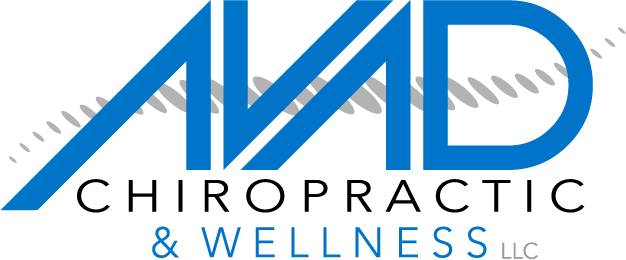How to Heal a Herniated Disc Naturally | Disc Defense Blueprint
How to Recognize a Herniated Disc—and Heal Naturally Without Surgery
If you’ve ever felt sharp pain radiating from your back down your leg, that deep ache that stops you in your tracks, you might be dealing with a herniated disc—a common spinal issue that affects millions each year.
The good news? Most herniated discs can heal naturally with the right movement, posture, and recovery plan—without injections or surgery.
In this article, you’ll learn:
How to recognize the signs of a herniated disc
The 3 stages of natural recovery
The role of nutrition, movement, and mindset in spinal healing
If you’re serious about rebuilding your spine safely, check out The Disc Defense Blueprint—a comprehensive program from Avad Chiropractic designed for people with herniated or chronic low back pain.
What Is a Herniated Disc?
Your spine is made of vertebrae separated by discs that act as cushions. Each disc has a soft center (the nucleus pulposus) surrounded by a tough outer ring (the annulus fibrosus).
When that outer layer weakens or tears, the inner material can bulge or leak, pressing on nearby nerves. This is what’s called a herniated disc or “slipped disc.”
Depending on where it occurs:
A lumbar disc herniation (lower back) often causes sciatica—pain, numbness, or tingling down one leg.
A cervical disc herniation (neck) can cause arm or shoulder pain, sometimes with weakness or tingling in the fingers.
Recognizing the Symptoms of a Herniated Disc
You don’t need an MRI to suspect disc involvement—your body sends clear signals. Look for these patterns:
1. Radiating pain
Pain travels along a nerve pathway—down the leg (in lumbar herniations) or into the shoulder/arm (in cervical cases).
2. Tingling or numbness
Compressed nerves cause tingling, burning, or “pins and needles” sensations in one side of the body.
3. Muscle weakness
You might notice one leg or arm feels weaker, or you struggle to lift your foot—signs of nerve irritation.
4. Pain worse when sitting
Sitting increases spinal pressure. If your pain improves when standing or walking, a disc may be involved.
5. Relief when lying flat
Discs often feel better when decompressed. Resting flat reduces load on spinal nerves and promotes healing.
Why You Don’t Always Need Surgery
Surgery can sound appealing when pain feels unbearable. But studies show over 90% of herniated discs improve without surgery when managed properly.
The body can reabsorb disc material and reduce inflammation naturally. What matters is restoring the right mechanics—movement, posture, and stability.
Surgery should be a last resort, reserved for severe cases with nerve compression causing weakness, loss of sensation, or bowel/bladder dysfunction.
The 3 Stages of Healing Naturally
Stage 1: Calm the inflammation
Focus on reducing pressure and irritation:
Avoid sitting for long periods
Lie flat or walk in short intervals
Apply ice to reduce inflammation
Use gentle prone positions (lying on your stomach or elbows) to relieve pressure
This phase is about giving your spine a calm environment to start repairing.
Stage 2: Restore movement
Once pain lessens, movement becomes your medicine. Gentle exercises like:
McKenzie extensions
Bird Dogs
Side Planks
Modified Curl-Ups
These movements rebuild endurance and stability in your spine.
You’ll find step-by-step guidance inside The Disc Defense Blueprint—with professional demonstrations designed for safety and results.
Stage 3: Build resilience
When pain is gone, don’t stop. Strengthen your core, hips, and glutes to prevent re-injury. Learn to move efficiently—hinge at the hips, engage your core, and maintain neutral posture during daily activities.
Long-term resilience means your spine can handle life’s demands again.
Why Movement Is Medicine
Your spinal discs don’t have direct blood flow—they rely on motion to get nutrients and remove waste.
Think of movement as the pump that feeds your spine. When you walk, stretch, or exercise correctly, your discs rehydrate and heal.
Rest alone won’t fix the problem; targeted movement will.
Nutrition and Supplement Support for Disc Healing
Inflammation and recovery are strongly influenced by diet. Focus on anti-inflammatory and tissue-healing foods:
Omega-3 fats (salmon, chia, flaxseed)
Collagen-rich broth for connective tissue support
Leafy greens and berries for antioxidants
Magnesium for muscle relaxation
Avoid processed sugar and refined oils—they’re inflammation triggers.
Drink plenty of water. Your discs are 70–80% fluid; dehydration makes them weaker and thinner.
Posture and Lifestyle Changes
Healing a disc means changing daily habits that caused the problem in the first place.
Take movement breaks every 30–45 minutes.
Use a lumbar support when sitting.
Sleep smart—on your back with a pillow under your knees or on your side with one between your legs.
Lift properly by hinging at the hips, not bending your spine.
These simple habits protect the healing process and prevent future injury.
The Mind-Body Connection in Healing
Pain isn’t just physical—it’s emotional and neurological. Chronic pain rewires the brain’s threat response, creating tension and anxiety.
Mindfulness, deep breathing, prayer and Qi Gong can calm your nervous system, lower cortisol, and improve your pain threshold.
Healing happens faster when your mind and body are aligned toward safety and confidence.
When to See a Doctor
Most herniated discs heal naturally, but see a professional immediately if you experience:
Loss of bladder or bowel control
Numbness in your groin area
Rapidly worsening leg weakness
Otherwise, working with a chiropractor or movement specialist can help you progress safely and confidently.
Ready to Rebuild Your Spine?
Your herniated disc isn’t a life sentence—it’s a wake-up call. With patience, movement, and the right knowledge, your spine can recover stronger than before.
If you’re ready for a structured system that teaches you how to:
Reduce disc inflammation
Strengthen safely
Protect your spine long-term
Then explore The Disc Defense Blueprint.
It’s your step-by-step guide to reclaiming strength, movement, and confidence—without surgery or endless medical visits.
Your spine was built to move. Teach it to move well again, and it will protect you for life.
